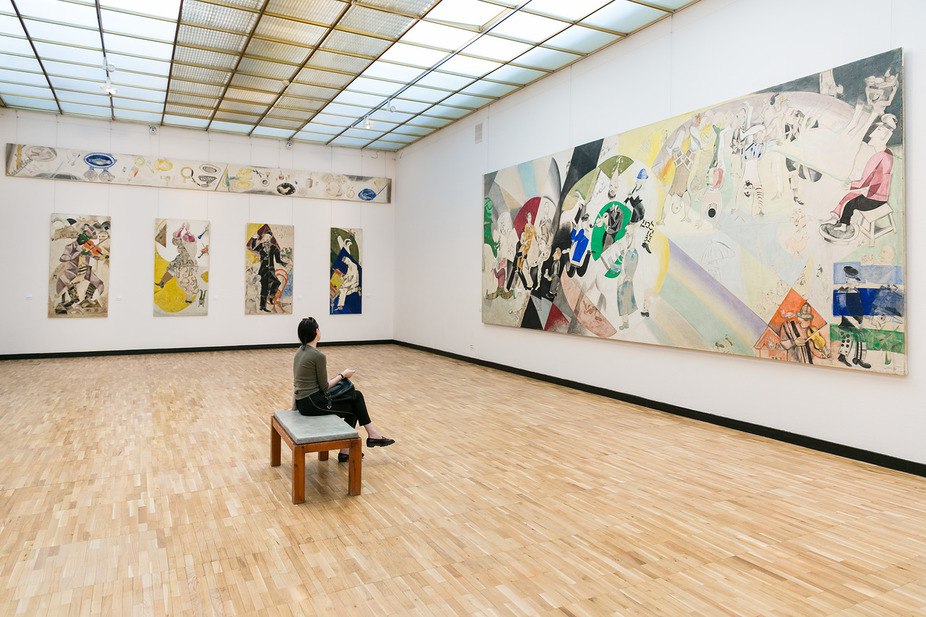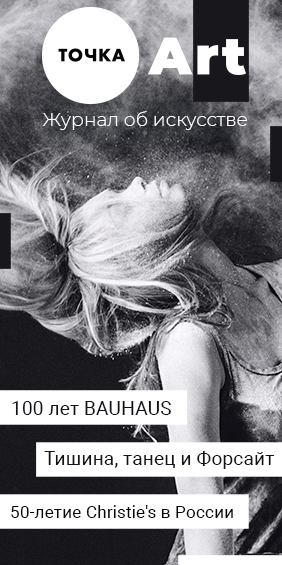The Tretyakov Gallery opened the halls of Russian avant-garde
In the first part of a permanent exposition called Art of the 20th Century visitors can find such masterpieces as Bathing of a Red Horse by Kuzma Petrov-Vodkin, two versions of the Black Square by Kazimir Malevich, Marc Chagal’s painting Over the City and other iconic works of the Russian avant-garde.

The most complete panorama of Russian art of the first quarter of the 20th century in the country is presented in the halls № 1–14. Curators and museum keepers have created an updated version of a permanent exhibition of Russian avant-garde, which demonstrates modern take on the art of that era. Therefore, The Tretyakov Gallery got a chance to show all the masterpieces of its collection in a permanent exposition simultaneously. Some of them were often absent from the museum because they were presented on the major exhibitions of Russian art worldwide.
As it was before, the hall № 1 is opened by Kuzma Petrov-Vodkin’s works and, particularly, his famous painting Bathing of a Red Horse (1912), which was a kind of precursor for tumultuous history of Russia in the 20th century. New variant of permanent exposition is supposed to show the evolution of Russian art of the beginning of 20th century. The hall № 2 is devoted to the heritage of Natalia Goncharova and Mikhail Larionov, the brightest representatives of early Russian avant-garde, masterminds and participants of the scandalous artistic groups Donkey’s Tail and The Target. The Tretyakov Gallery store the most complete collection of these painters, which allows to show different facets of their creative explorations using their most remarkable works as an example. This also includes Larionov’s Rayonism and Goncharova’s experiments in Primitivism.
The halls № 3 and № 4 introduce a broad panorama of artistic groups of the 1910s — from Union of the Youth to Jack of Diamonds. One can see the most important paintings by such craftsmen as Nikolai Kulbin, Aristarkh Lentulov, Ilya Mashkov, Pyotr Konchalovsky and the others. For the first time the permanent exposition presents all three David Burliuk’s works available from the museum collection and also three paintings by Niko Pirosmani.
The hall № 6 is devoted to the famous collection of George Costakis. There visitors can find some painted and graphic works, which the collector gave as a gift to The Tretyakov Gallery in 1977. In a rather small hall № 7 the works of Avant-garde Amazons — Aleksandra Ekster, Olga Rozanova, Lyubov Popova and Vera Pestel — are collected. Also two monographic halls were reinstated: № 8 of Vladimir Tatlin and № 9 of Marc Chagal. In the Tatlin’s hall, despite his artistic works, visitors can observe his constructivist experiments: Contre-Reliefs and the original ornithopter Letatlin, an aircraft without an engine which the artist constructed in the beginning of the 1930s. The exposition is complemented by the reconstruction of the exhibition of The Society of Young Artists (1921), which became a manifest for all Constructivists and which defined the development of design in 20th century.
In the hall of Marc Chagal one can see monumental panels for The Moscow State Jewish Theatre and also an undisputable masterpiece — the painting Over the Town (1918). In the first part of the hall № 10 visitors get acquainted with Chagal’s graphics. Also there is a zone for the exposition of Constructivists’ graphics, and in the last part a special section introduces an authentic school of Pavel Filonov. Despite the paintings of Filonov himself, exposition is complemented by graphic works of the followers of his analytical method.
Paintings of Nathan Altman, Alexander Yakovlev and Boris Grigoriev are gathered in a small hall № 12. They demonstrate the whole variety of artistic tendencies, which existed parallel to the Avant-garde. The hall № 13 was completely renovated, now it is a space for the art without an object. Two versions of Kazimir Malevich’s The Black Square (1915 and 1929) are presented there, and also some works of his disciples. There are also exhibited experimental works of Alexander Rodchenko, Gustav Klutsis, Lyubov Popova, Olga Rozanova and other pioneers of Russian avant-garde. It is followed by the hall № 14, where the history of Malevich’s school continues up to the beginning of 1930s, when Anna Leporskaya, Nikolai Suetin and Konstantin Rozhdestvenskiy, following their teacher, turned to the figurative compositions.
Translated by Polina Vologdina




